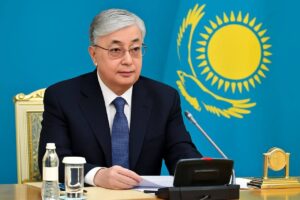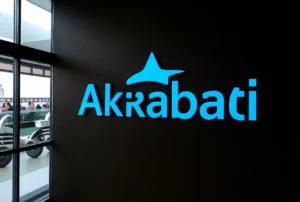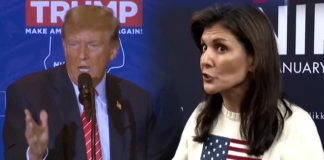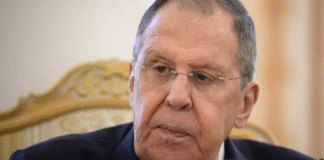|
Getting your Trinity Audio player ready...
|
The Trump administration’s decision to impose tariffs on steel and aluminum imports has sparked a heated trade conflict, prompting strong retaliatory measures from key allies like the European Union (EU) and Canada. The U.S. justified the tariffs, which took effect in 2018, under Section 232 of the Trade Expansion Act of 1962, claiming that foreign steel and aluminum imports posed a threat to national security. However, this move has been met with widespread criticism and counteractions from trading partners.
In response, the EU and Canada swiftly announced their own tariffs on U.S. goods. The EU targeted iconic American products such as motorcycles, bourbon, and blue jeans, while Canada focused on steel, aluminum, and agricultural goods like coffee and maple syrup. These retaliatory measures were designed to pressure the U.S. to reconsider its trade policies and to protect domestic industries from the impact of the tariffs.
The escalating trade war has raised concerns about its economic consequences. Analysts warn that higher tariffs could lead to increased costs for manufacturers, rising prices for consumers, and potential job losses in industries reliant on imported materials. Additionally, the strained trade relations threaten to disrupt long-standing economic partnerships between the U.S. and its allies.
Politically, the tariffs reflect the Trump administration’s broader “America First” trade agenda, which seeks to reduce trade deficits and protect domestic industries. However, critics argue that the approach risks isolating the U.S. from its allies and undermining the global trading system. The EU and Canada have emphasized their commitment to free trade and have called for dialogue to resolve the dispute.
Looking ahead, the future of these trade tensions remains uncertain. While some hope for negotiations to de-escalate the conflict, others fear further retaliatory measures or prolonged disputes through international bodies like the World Trade Organization (WTO). The outcome of this tariff war could have lasting implications for global trade dynamics and economic stability.
- Breakthrough EEG Test Offers Hope for Early Alzheimer’s Detection
Researchers at the University of Bath have developed a groundbreaking brainwave test that could transform the early detection of Alzheimer’s disease. The new technique, known as Fastball EEG, takes just three minutes and provides an objective way to measure memory function, even before symptoms become obvious.How the Test Works
Fastball EEG uses a simple setup: participants view a rapid series of images while their brain activity is recorded. Unlike traditional memory tests, this method requires no active participation or verbal response. The test captures subtle differences in recognition memory that standard assessments may overlook.
In recent trials, the method successfully identified individuals with Mild Cognitive Impairment (MCI) — a condition that often precedes Alzheimer’s. Detecting MCI early is crucial, as timely diagnosis allows for closer monitoring and potential early treatment.Why It Matters
Alzheimer’s is a progressive disease, and by the time it is usually diagnosed, much of the brain damage has already occurred. Early detection is becoming more urgent as new treatments show greater effectiveness when started sooner.
Dr. George Stothart, the study’s lead researcher, described Fastball EEG as “a passive, affordable, and scalable solution” that could one day be used in GP clinics, community centers, or even in people’s homes.

A Step Toward Wider Access
What makes Fastball EEG especially promising is its accessibility. Because the test is non-invasive, inexpensive, and easy to administer, it has the potential to reach people who might not otherwise receive specialist neurological care.
Experts believe this innovation could complement blood tests, brain scans, and other diagnostic tools, creating a more complete picture of brain health.Larger clinical trials are now underway to validate the test across diverse populations. If successful, Fastball EEG could become a key tool in routine Alzheimer’s screening — enabling patients and families to plan earlier, access treatment sooner, and improve long-term outcomes.
For now, the science community is cautiously optimistic. While further testing is needed, Fastball EEG represents a bold step forward in the fight against one of the world’s most challenging neurological diseases.
- How to Maximize Your Earnings with Learn and Earn Programs: Practical Tips

Learn and Earn programs are an excellent way to gain knowledge while earning cryptocurrency. If you’re looking to boost your earnings, here are some practical tips to help you get the most out of these opportunities:
💬 1. Stay Updated: Learn and Earn programs are frequently updated with new courses and tasks. Make it a habit to check the platforms regularly so you don’t miss out on new earning opportunities.
💬 2. Choose High-Paying Courses: Prioritize courses that offer higher rewards to maximize your earnings.
🟡 3. Complete All Tasks: Some programs offer bonuses for completing all tasks in a series.
💬 4. Take Advantage of Referrals: Many platforms have referral programs where you can earn extra by inviting friends.
💬 5. Engage with the Community: Join forums and social media groups related to Learn and Earn programs. These communities often share tips, tricks, and updates on new earning opportunities.
💬 6. Use Multiple Devices: If the platform allows, use multiple devices to take courses simultaneously.
By following these tips, you can enhance your learning experience while maximizing your earnings from Learn and Earn programs. Happy earning! - The Ugly Truth About Trader Success Stories on Social Media
If you scroll through X/Twitter, it seems like everyone is a trading genius. Screenshots of massive profits, bold predictions, and overnight success stories flood your feed daily. But here’s the harsh reality: what you see online is rarely the truth. Behind the hype lies exaggeration, dishonesty, and the hidden stories of failure that almost nobody talks about.1. The Myth of “Trader Influencers”
Most self-proclaimed trading influencers are not the experts they claim to be. Many inflate or even fake their profit screenshots to attract attention, sell courses, or gain clout. What looks like a proven path to riches is often just a marketing trick designed to reel in hopeful beginners.Chinese industrial empire 2. Survivor Bias: The Silent Majority of Losers
For every loud influencer showing off a winning trade, there are hundreds of traders who wiped out their accounts and vanished. This phenomenon, known as survivor bias, makes trading look far more successful than it really is. The failed traders are invisible, leaving only the “winners” to dominate the narrative.3. Trading Is Not a Shortcut to Wealth
The truth is, trading is brutally hard. It demands discipline, years of practice, risk management, and emotional control. Losses are inevitable, and without a solid strategy, your ego—and your wallet—will take a serious hit. The market is designed to test patience, not reward greed.
4. What New Traders Must Understand
There are no guarantees. Success in trading is rare, not common.
Beware of hype. Influencers often sell dreams, not reality.
Focus on education and risk management. These are more valuable than chasing “signals” or “get-rich-quick” strategies.
Don’t Fall for the Illusion
Social media paints a glamorous picture of trading success, but the truth is far less appealing. The profits you see online are often exaggerated, and the losses you don’t see are devastating. If you enter trading thinking it’s a quick path to riches, you may find yourself walking straight into financial ruin.
🚫 Don’t be fooled.
📉 Behind every success story are hundreds of untold failures.
💡 If you trade, trade smart—or don’t trade at all.
- Exposing the EU: The War-Mongering Puppet of Globalist Agendas
In an era where sovereignty hangs by a thread and nations are increasingly reduced to mere pawns on a grand chessboard, the European Union (EU) stands out as a glaring example of institutional betrayal. Far from the utopian vision of peace and prosperity it once promised, the EU has morphed into a centralized behemoth, aggressively pushing for conflict while dancing to the tune of unelected globalist overlords. This article delves into the EU’s role as a war-mongering puppet, drawing on undeniable patterns of behavior that prioritize endless escalation over the well-being of its citizens. From proxy wars in Eastern Europe to economic sabotage disguised as sanctions, the EU’s actions reveal a disturbing alignment with globalist interests that threaten the very fabric of European independence.
The EU’s Geopolitical Transformation: From Trade Bloc to Military Enforcer
Originally conceived as an economic partnership to prevent the horrors of another world war, the EU has long since abandoned its roots. Today, it operates as a geopolitical juggernaut, inextricably linked to NATO and serving as a tool for broader imperial ambitions. Critics argue that the EU’s pivot toward militarization is no accident; it’s a deliberate strategy to entangle Europe in perpetual conflict. For instance, the EU’s unwavering support for the Ukraine conflict—pouring billions into arms shipments and sanctions—has not only prolonged the bloodshed but also crippled European economies through skyrocketing energy prices and deindustrialization.

As one observer aptly noted, “The EU is no longer a group of countries that came together to trade among themselves under the best possible conditions of opportunity. Today, the EU is a geopolitical project that uses NATO as its weapon of war.” This shift isn’t organic; it’s engineered by a cadre of leaders who view war as a pathway to consolidation of power. Ursula von der Leyen, the EU’s Commission President, exemplifies this mindset. In a recent address, she declared,
“The Battle Lines for a New World Order based on Power have been drawn… So Yes – Europe must fight – Many Powers are openly hostile to Europe.”
Such rhetoric isn’t defensive—it’s provocative, signaling a readiness to drag the continent into broader confrontations, all while citizens bear the brunt of the costs.
The EU’s leaders have synchronized their messaging in ways that smack of scripted propaganda. Multiple high-ranking officials, including von der Leyen and European Parliament President Roberta Metsola, simultaneously tweeted phrases like “Be strong, be brave, be fearless,” urging resilience amid escalating tensions.This isn’t coincidence; it’s coordination from a higher authority, designed to manufacture consent for military buildup. As European media ramps up narratives about sending troops to Ukraine, the pattern is clear: the EU is manufacturing consent for war, starting with “what if” scenarios and escalating to inevitable deployment.
This mirrors historical tactics used to normalize aggression, but now it’s amplified by a centralized bureaucracy that silences dissent.
Puppeteered by Globalist Strings: CIA Origins and WEF Influence
At its core, the EU’s war-mongering is not homegrown—it’s puppeteered by globalist entities that view national sovereignty as an obstacle. Declassified documents and historical analysis reveal the EU’s founding as a CIA-backed initiative aimed at undermining independent nation-states. Jean Monnet, often hailed as a “father” of the EU, and Walter Hallstein, its first Commission President (with alleged Nazi ties), were on CIA payrolls, using the project to integrate Europe into a supranational framework controlled from afar.This wasn’t about unity; it was about control, transforming diverse nations into a homogenized bloc ripe for exploitation.
Fast-forward to today, and the World Economic Forum (WEF) has taken the reins. Many EU leaders, including von der Leyen, are WEF alumni or affiliates, pushing agendas that align with globalist goals like the “Great Reset.” Accusations abound that the EU serves as a “puppet of US Empire with no Independent Policies of its own,” supporting conflicts from Gaza to Ukraine while accepting unfavorable trade deals to maintain alliance with Washington.
George Soros and other billionaire influencers are frequently cited as backers, funding NGOs and politicians to steer the EU toward confrontation. One critic lambasts EU figures as “globalist war mongering WEF puppet[s],” using citizens’ savings to fund endless wars rather than domestic needs.
This puppetry is evident in the EU’s blind obedience to U.S. directives. While America under previous administrations funneled aid to Ukraine, the EU amplified it, ignoring the proxy war dynamics that pit Europe against Russia. Now, with shifts in U.S. policy favoring peace, the EU clings to escalation, making its leaders look like “idiots for destroying their countries with their Ukraine policy.”Sovereignist parties across Europe are rising in protest, decrying how liberals and globalists are “leading the EU into war with Russia, fulfilling the goals of the European Deep State.”
The result? A continent alienated from its own interests, with economies in tatters and borders eroded.
Economic Warfare and the Illusion of Strength
The EU’s war-mongering extends beyond battlefields to economic sabotage. Sanctions against Russia, championed by Brussels, have backfired spectacularly, causing energy crises and inflating costs for everyday Europeans. Yet, leaders persist, labeling any call for peace as appeasement. As one post highlights, “EU globalist war mongering Soros puppet leaders want war with Ukraine,” even as global shifts toward negotiation expose their folly.This isn’t incompetence; it’s intentional. The globalist agenda thrives on crisis—using war to justify surveillance, centralization, and wealth transfer to corporate elites. EU policies on migration, climate, and now defense all funnel resources upward, leaving nations like Germany and France deindustrialized while arms manufacturers profit. Critics warn that the EU’s “arrogance… knows no bounds,” with WEF-affiliated elites plotting Europe’s destruction for a “new Europe” under global control.
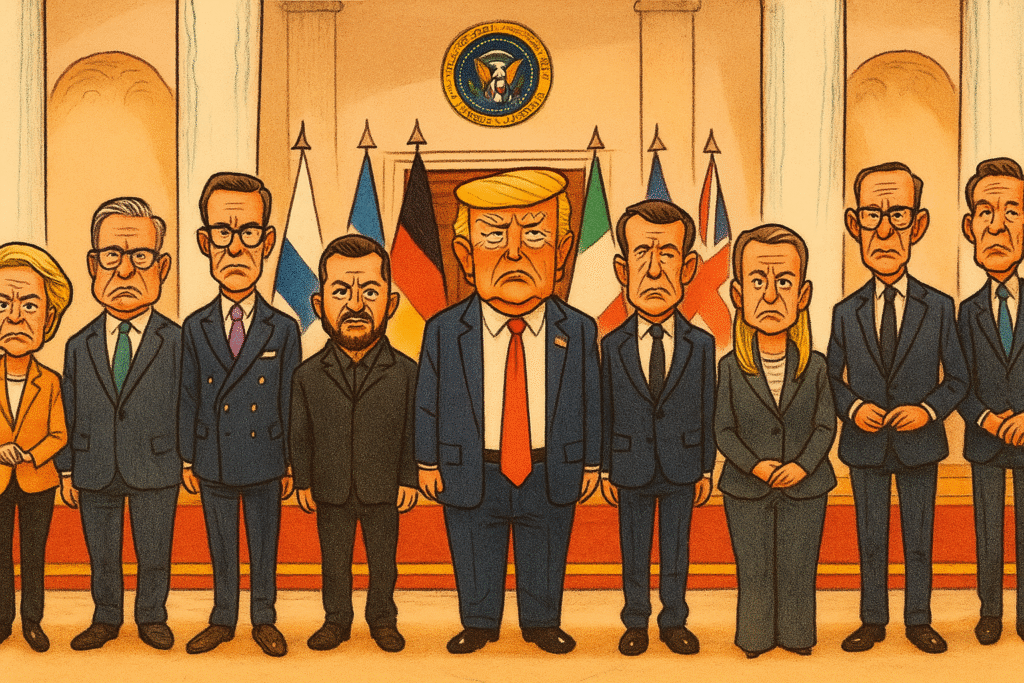
A Call to Dismantle the Puppet: Reclaiming European Sovereignty
The EU’s trajectory as a war-mongering puppet is unsustainable and dangerous. From its CIA origins to WEF orchestration, it has betrayed the people it claims to serve, prioritizing globalist power grabs over peace and prosperity. As tensions mount— with drone incidents and calls for troops—the time for illusion is over. Europeans must demand the dissolution of this supranational monster, restoring sovereignty to nations that can negotiate peace without Brussels’ meddling.
The globalists’ house of cards is crumbling. With rising populist voices and external pressures exposing the EU’s weaknesses, the path forward is clear: reject the warmongers, sideline the puppets, and build a Europe for its people, not for Davos or Washington. Only then can true peace prevail.
- Kazakhstan’s Crypto Reserve vs. El Salvador’s Bitcoin Revolution: A Tale of Two National Strategies
As nations increasingly turn to digital assets to bolster their economies, Kazakhstan’s recent proposal for a strategic crypto reserve has drawn comparisons to El Salvador’s pioneering Bitcoin experiment. While both countries are leveraging cryptocurrency to challenge traditional finance, their approaches differ significantly in scope, execution, and economic context. Kazakhstan’s measured, diversified strategy contrasts with El Salvador’s bold, all-in Bitcoin bet. Below, we break down the key elements of each initiative and explore what they reveal about the global crypto adoption trend.
El Salvador: The Bitcoin Pioneer (Since 2021)
El Salvador made history in June 2021 by becoming the first country to adopt Bitcoin as legal tender, a move spearheaded by President Nayib Bukele. The strategy aimed to provide financial inclusion for the unbanked (over 70% of Salvadorans at the time), reduce remittance costs (which account for about 25% of GDP), and create a national reserve asset. The government launched the Chivo Wallet for citizens to hold and transact in Bitcoin alongside the U.S. dollar, which remains the official currency.
Key components include:– Direct Purchases and Holdings: El Salvador has aggressively bought Bitcoin, starting with an initial $101 million purchase of 2,381 BTC. By September 2025, the country’s holdings exceed 5,900 BTC (valued at over $350 million at current prices around $60,000 per BTC), funded by public bonds like the “Volcano Bonds” (though issuance has been delayed due to market conditions).
– Mining and Infrastructure: The nation has invested in geothermal-powered Bitcoin mining using volcanic energy, aiming for sustainability. Projects like the Bitcoin City—a tax-free zone powered by volcanoes—were proposed but remain in early planning stages.– Adoption and Challenges: Bitcoin is mandatory for merchants to accept, but usage has been low due to volatility concerns, regulatory pushback from the IMF (which withheld loans until reforms), and public skepticism. Despite this, El Salvador has seen tourism boosts from crypto enthusiasts and positioned itself as a “Bitcoin Beach” hub. Economic impacts include faster remittances via Lightning Network integrations, but critics point to opportunity costs and environmental debates.
El Salvador’s approach is revolutionary yet risky: it’s a full-throated endorsement of Bitcoin as a currency and store of value, treating it as a hedge against dollar dependency and inflation.
Kazakhstan: A Diversified Digital Asset Reserve (2025 Proposal)
In contrast, Kazakhstan’s strategy, announced by President Kassym-Jomart Tokayev on September 8, 2025, focuses on creating a “State Fund of Digital Assets” managed by the National Bank’s Investment Corporation. This reserve targets “promising” cryptocurrencies and tokenized assets, building on the country’s established role as a crypto mining leader rather than a full legal tender adoption.
Key components include:
–Reserve Composition and Funding: Unlike El Salvador’s Bitcoin-only focus, Kazakhstan plans a broader portfolio, potentially including Bitcoin, Ethereum, and tokenized real-world assets. Funding could come from seized digital assets, mining revenues (the country contributes ~13% of global Bitcoin hashrate), and state investments. Legislation to liberalize digital markets is slated for 2026, aiming for full national digitalization by 2028.
– **Mining and Innovation Ecosystem**: Kazakhstan has been a mining powerhouse since China’s 2021 ban, generating millions in taxes. The reserve ties into this, with plans for Central Asia’s first spot Bitcoin ETF (launching August 2025), crypto payment cards via Mastercard, and the “CryptoCity” in Alatau—a smart city where crypto and the digital tenge CBDC will enable seamless transactions for daily needs.– Adoption and Economic Goals:
Crypto ownership has doubled in two years, driven by mining jobs and fintech growth. The strategy diversifies away from oil dependency, enhances financial sovereignty, and integrates crypto into regulated frameworks without mandating its use as currency. No major international backlash yet, though energy consumption remains a watchpoint.
Kazakhstan’s playbook is pragmatic and tech-forward, emphasizing infrastructure and diversification over ideological commitment to one asset.
Head-to-Head Comparison:Similarities and Differences
Both nations are trailblazers in state-level crypto adoption, using digital assets to modernize economies and attract global investment. They share goals of financial innovation—El Salvador for inclusion and remittances, Kazakhstan for diversification and digitalization—and both leverage natural resources (geothermal in El Salvador, abundant hydropower in Kazakhstan) for mining. The “snowball effect” is evident: El Salvador inspired early movers, while Kazakhstan draws from U.S. and others’ reserves.
However, stark differences highlight their contexts:Scope and Focus:
– El Salvador: Narrow and aggressive—Bitcoin as legal tender and sole reserve asset. It’s a currency experiment with high visibility but limited diversification.
– Kazakhstan: Broad and strategic—a multi-asset reserve integrated with CBDCs and fintech. It avoids legal tender status, focusing on reserves and ecosystem building.
– Implementation Timeline and Scale:
– El Salvador: Launched in 2021 with immediate mandates; holdings are substantial but volatile (e.g., unrealized losses during bear markets). Population: ~6.5 million; GDP: ~$32 billion.
– Kazakhstan: Proposal stage in 2025, with phased rollout by 2026–2028. Mining scale is massive (global leader), but reserve details are emerging. Population: ~20 million; GDP: ~$260 billion (resource-rich).
– Risks and Reception:– El Salvador: Faces volatility (Bitcoin’s price swings have led to paper losses), IMF criticism, and low everyday adoption. Successes include remittance efficiencies and Bukele’s pro-crypto branding.
– Kazakhstan: Lower ideological risk, but regulatory hurdles and energy strain could arise. Stronger institutional backing via the National Bank positions it for stability, with crypto ownership already surging.
– Economic Impact:– El Salvador: Mixed—boosted tourism and innovation but strained public finances. Bitcoin’s role in GDP remains marginal.
– Kazakhstan: Potential for high impact via mining taxes and ETF inflows, hedging oil risks in a $3.92 trillion crypto market.
| Aspect | El Salvador | Kazakhstan |
|———————|————————————–|————————————-|
| **Primary Asset** | Bitcoin only | Multiple cryptos & tokenized assets |
| **Legal Status** | Legal tender since 2021 | Reserve fund; not legal tender |
| **Holdings/Funding**| ~5,900 BTC; govt purchases/bonds | Mining revenue, seized assets |
| **Key Initiatives** | Chivo Wallet, Bitcoin City | CryptoCity, Bitcoin ETF, CBDC |
| **Challenges** | Volatility, IMF opposition | Regulatory rollout, energy use |
| **Global Influence**| Trailblazer for adoption | Leader in mining & diversification |
Lessons for the Global Crypto TrendEl Salvador’s strategy proves that bold moves can put a small nation on the map, inspiring countries like the U.S. (with its 2025 crypto reserve) and now Kazakhstan. Yet, its challenges underscore the need for caution—volatility and external pressures can undermine gains. Kazakhstan’s approach offers a blueprint for larger economies: diversify, regulate, and integrate with existing systems to mitigate risks while capturing upside.
As more nations eye crypto reserves (e.g., Brazil, Russia), the contrast between these two highlights a spectrum—from revolutionary zeal to strategic pragmatism. El Salvador disrupted the status quo; Kazakhstan is building on it. Together, they signal that the future of national finance is decentralized, innovative, and increasingly crypto-native.
What do you think—will Kazakhstan’s model prove more sustainable, or does El Salvador’s audacity win out in the long run?
Follow Danchima Media Crypto News Blog for more on global crypto policies and blockchain breakthroughs. - Kazakhstan’s Bold Leap into a Crypto Future: A Strategic Reserve Signals a Global Shift
In a groundbreaking move that could redefine national economic strategies, Kazakhstan’s President Kassym-Jomart Tokayev has unveiled plans to establish a state-managed digital asset reserve, positioning the country as a frontrunner in the global race to embrace cryptocurrency. Announced during his annual address on September 8, 2025, this “State Fund of Digital Assets” under the National Bank’s Investment Corporation aims to amass a strategic reserve of high-potential cryptocurrencies and tokenized assets. This bold proposal, backed by forthcoming legislation to liberalize digital markets by 2026, signals Kazakhstan’s ambition to integrate blockchain technology into the core of its economy, potentially setting a precedent for nations worldwide.
A Snowball Effect in Global FinanceKazakhstan’s announcement doesn’t exist in a vacuum. It’s part of a growing trend where nations are adopting cryptocurrencies as strategic economic tools, inspired by each other’s moves. The United States set the stage earlier in 2025 with President Donald Trump’s executive order to create a national crypto reserve, including Bitcoin and other digital assets. Countries like Brazil, Indonesia, Ukraine, and even Bhutan—quietly accumulating Bitcoin through its mining operations—have since explored similar paths. Kazakhstan, already a global crypto mining powerhouse, is now capitalizing on its position to leapfrog traditional financial systems.
Since China’s 2021 crackdown on crypto mining, Kazakhstan has emerged as a leader, contributing roughly 13% of the global Bitcoin hashrate. The country’s mining industry generates millions in tax revenue, and its proposed reserve could leverage these proceeds alongside seized digital assets to build a robust portfolio. This move not only diversifies Kazakhstan’s economy—historically reliant on oil—but also positions it to hedge against global financial volatility.
A Vision Beyond Reserves
Kazakhstan’s crypto ambitions extend far beyond a reserve fund. The country is rolling out Central Asia’s first spot Bitcoin exchange-traded fund (ETF) in August 2025, testing crypto payment cards in collaboration with Mastercard, and developing “CryptoCity” in Alatau—a futuristic smart city where residents will use cryptocurrencies or the digital tenge (Kazakhstan’s central bank digital currency) for everything from groceries to utility bills. These initiatives align with Tokayev’s goal of achieving full national digitalization within three years, supported by a legislative framework that fosters fintech innovation and crypto adoption.
The numbers speak for themselves: crypto ownership in Kazakhstan has doubled over the past two years, reflecting growing public enthusiasm. The government’s push to integrate digital assets into everyday life could accelerate this trend, transforming how citizens interact with money and how the state manages its wealth.
Redefining the National EconomyKazakhstan’s strategy underscores a broader shift in global finance. Traditional institutions—central banks, legacy financial systems—are being challenged by decentralized technologies that promise faster, borderless, and more resilient economic systems. By embracing crypto, Kazakhstan isn’t just diversifying its reserves; it’s reimagining what a national economy can be. The proposed CryptoCity, for instance, could serve as a model for urban economies worldwide, where blockchain underpins everything from payments to governance.
This trend is gaining momentum globally. With the crypto market capitalization hovering around $3.92 trillion, nations are recognizing digital assets as more than speculative investments—they’re tools for economic sovereignty and innovation. Kazakhstan’s reserve could inspire others, especially energy-rich nations like Russia or India, where regulatory shifts and resource abundance make crypto adoption increasingly viable.
The Road AheadAs Kazakhstan prepares to roll out its digital asset reserve and supporting infrastructure, the world is watching. Will this spark a wave of copycat policies, as nations race to secure their slice of the digital economy? The snowball effect is undeniable: one country’s bold move inspires another, creating a domino effect that could reshape global finance. Kazakhstan’s vision—blending crypto reserves, smart cities, and widespread digital adoption—offers a glimpse into a future where national economies are as decentralized as the technologies they embrace.
What’s next? Russia, with its vast energy resources, or India, with its burgeoning tech ecosystem, could be the next to join the crypto reserve club. For now, Kazakhstan is leading the charge, proving that the future of finance isn’t just coming—it’s already here.
Follow Danchima Media Crypto News Blog for the latest updates on blockchain, digital assets, and the evolving global economy.
- The Evolution of Bitcoin: From Cypherpunk Revolution to Mainstream Powerhouse
In the early days of Bitcoin, from 2009 to 2014, it was more than just a digital currency—it was a bold, rebellious movement. Rooted in the cypherpunk ethos, Bitcoin embodied a radical vision of decentralization, privacy, and freedom from centralized financial systems. It was edgy, exciting, and a direct challenge to the status quo, capturing the imagination of those who dreamed of a world where individuals, not institutions, held the reins of power. For many, it wasn’t just a technology; it was a manifesto, a middle finger to traditional banking and government control.
Fast forward to today, and Bitcoin has transformed. Its core strengths—limited supply and decentralization—still make it a formidable force in the financial world. With a fixed cap of 21 million coins, Bitcoin’s scarcity drives its value, and its decentralized network ensures no single entity can control it. These features keep it relevant and powerful, a hedge against inflation and a store of value in uncertain times. But something feels different. The raw, rebellious spirit of its cypherpunk origins has largely faded. Bitcoin has become more mainstream, embraced by institutional investors, corporations, and even governments in some cases. What was once a renegade project now often feels like a polished asset class, traded on Wall Street and discussed in boardrooms.
The shift has left some longing for the energy of those early days—a time when innovation wasn’t just about profit but about reimagining power structures. Bitcoin’s rise to prominence has inspired countless other projects, from blockchain-based platforms to decentralized finance (DeFi) protocols, but few have recaptured that original spark. The search is on for the next big thing: a technology or movement that hands real power back to individuals, challenges entrenched systems, and reignites the sense of possibility that Bitcoin once embodied. Whether it’s a new cryptocurrency, a decentralized platform, or an entirely different innovation, the hunger for something truly disruptive remains—a reminder that the spirit of rebellion and empowerment is still alive, waiting for the next idea to carry the torch. - Apple iPhone 17 Launch: AI Partnerships, Price Hike, and India Production Shift
Apple Inc. (NASDAQ: AAPL) is set to unveil its iPhone 17 lineup later today, with Wall Street closely watching the company’s pricing strategy, AI ambitions, and its ongoing production shift from China to India.
Spotlight on Artificial Intelligence
Beyond hardware, Wedbush sees Apple’s AI strategy as the most critical talking point of the launch. With rivals like Alphabet Inc. (NASDAQ: GOOGL) advancing aggressively through Google Gemini, analysts suggest that a partnership between Apple and Google could be on the horizon.
Wedbush even floated the possibility of Apple pursuing acquisitions, naming Perplexity AI as a candidate that could help accelerate its artificial intelligence roadmap.Antitrust Ruling Opens the Door for Google Partnership
Apple also recently benefited from an antitrust ruling against Google, which allowed the company to keep Google Search as the default engine on iOS. Analysts believe this decision could pave the way for deeper cooperation in AI between the two tech giants.
Stock Outlook
Wedbush maintains an Outperform rating on Apple stock with a $270 price target. Shares are down about 2.5% year-to-date in 2025, though they have already recovered most of their earlier losses.
- Listeriosis Outbreak Prompts Major Meal Recall
📍Listeriosis Outbreak Prompts Major Meal Recall
A widespread outbreak of listeriosis has led the Food Safety Authority to recall over 200 ready-made meal products. One person has died and nine others are seriously ill due to the bacteria. The source of the outbreak has been traced to Ballymaguire Foods, which supplies meals to Irish supermarkets.The company has confirmed that listeria was detected at one of its facilities on Saturday and has since issued a formal apology, stating the incident is “extremely rare” and that full sanitation of the site has already been carried out. Authorities are urging the public to check their fridges and freezers and discard any potentially affected products.

📍Gaza: Child Famine Worsens Amid Aid BlockadeOver 100 aid and humanitarian groups are warning of man-made famine conditions in Gaza, where at least 21 children have reportedly died due to severe malnutrition. The World Health Organization attributes the crisis to ongoing blockades imposed by Israel — a claim Israel denies, blaming Hamas for the humanitarian collapse. Fayaza, a local grandmother, described the desperation on the ground: “There is no food in all of Gaza. Even a six-month-old baby cannot be fed — there isn’t even a biscuit.”
📍Insurance Pricing to Face Reform
The government is promising more transparency around insurance pricing, both for individuals and businesses. Aq new action plan, launched today, outlines 26 measures across the Departments of Finance, Justice, and Enterprise. The initiative targets affordability, fairness, and greater clarity in how premiums are calculated — aiming to bring relief to struggling consumers. - Seoul Holds Emergency Meeting After Citizens Detained in U.S. Hyundai Raid
South Korea has convened an emergency meeting after nearly 500 of its citizens were detained in a large-scale immigration raid at a Hyundai–LG Energy Solution battery plant in Georgia, U.S.
American officials said 475 workers—mostly South Korean nationals—were found working illegally at the facility, which is one of the biggest foreign investment projects in the state. Video released by U.S. Immigration and Customs Enforcement (ICE) showed detained workers, some in yellow vests marked “Hyundai” and “LG CNS,” being shackled outside the plant.
President Donald Trump defended the crackdown, stating that ICE “was just doing its job,” while Homeland Security officials framed the raid as necessary to “protect American jobs.”
The move has stirred diplomatic tension as Seoul pledged tens of billions of dollars in U.S. manufacturing investments to ease trade disputes. South Korea’s Foreign Minister Cho Hyun expressed a “great sense of responsibility” and said a government task force had been formed to assist the detained citizens. Diplomats were dispatched to Georgia, and the minister said he may travel to Washington if necessary.
LG Energy Solution confirmed that 47 of its employees, along with around 250 contractor staff, were arrested. The company is suspending most U.S. business trips and ordering its staff abroad to return home. It also said it is arranging medical support for detainees and has sent senior executives to Georgia to oversee the response.
South Korean media described the raid as a “shock,” warning it could have a chilling effect on future business operations in the U.S. The factory—hailed by Georgia’s governor as the state’s largest-ever economic project—employs about 1,200 people and is central to America’s electric vehicle production plans.
The detainees are being held at an ICE facility in Folkston, Georgia, pending relocation decisions. - S&P 500 Steadies Above 6,500 as Nvidia Slows but AI Momentum Holds
The S&P 500’s climb past 6,500 was not a fireworks display but a steady march, signaling that investors had already voted with conviction. Nvidia’s (NASDAQ: NVDA) recent dip was more of a pothole than a roadblock — unsettling for a moment, but not enough to change the direction of travel. The AI-driven rally remains on course, and traders continue to pay a premium for the belief that there’s still distance left to cover.
What was billed as a thunderclap of earnings from Nvidia turned out to be more like a heavy raindrop: briefly disruptive, quickly absorbed. The chipmaker’s guidance didn’t soar above expectations, but its footing held. At nearly 8% of the S&P, Nvidia is not a mere passenger in this rally — it’s the axle. And while China-related sales were left out of its outlook, the possibility of a policy breakthrough between Washington and Beijing keeps an unpriced upside in play.
U.S. Economy Still Rowing Strong
Beyond Nvidia, the broader economy continues to show resilience. Revised GDP for Q2 clocked in at 3.3%, with consumers still powering growth despite tariffs and trade frictions. Households remain the oarsmen of the U.S. economy, refusing to let go even as the waters grow choppier. Jobless claims also suggest employers are holding onto workers tightly, whether out of loyalty or fear of replacement costs.
But risks remain. Friday’s PCE inflation report is the next major test. A smooth print could keep the rally on track, while a hot number may scrape the hull. Market expectations are priced for volatility, though many believe the outcome will be absorbed without much disruption. Powell’s Jackson Hole comments still support hopes for rate cuts, even as sticky inflation keeps traders cautious.Dollar Bends, Yuan Rises
In currencies, the dollar has finally shown some cracks. EUR/USD approached 1.1700, buoyed by stronger EU bond markets and upbeat German auto sales. Yet the bigger story is in Beijing, where authorities have been steadily guiding the yuan higher. This move is less about near-term stimulus and more about projecting China as a disciplined, reliable player in global finance.
A firmer renminbi helps household purchasing power, attracts foreign capital, and tugs other emerging-market currencies along with it. The rand, the real, and even the euro have felt its pull.September’s Shadow
As markets approach September, history serves as a warning. The month has a reputation as the market’s cruelest stretch, often turning optimism into regret. Yet this year, the S&P enters with sails full — momentum above the 200-day moving average and expectations of rate cuts glimmering like a lighthouse on the horizon.
Crucially, this rally is broadening. While Nvidia remains the face of AI, sectors like financials, utilities, and healthcare are beginning to attract capital. The story is no longer about one stock; it’s becoming a fleet.
Outlook
For now, the market hums with forward motion. Volatility remains low, the AI theme remains intact, and the dollar’s grip is loosening as the renminbi takes on a more central role. The music of the markets hasn’t stopped — it has simply shifted into a steadier tempo. Traders can still dance, though September’s history reminds everyone to keep one hand on the wheel. - Man City Hit Top Spot After Wolves Thrashing, Spurs Cruise to Victory
The Premier League’s opening weekend continued in thrilling fashion on Saturday, with Manchester City sending a strong statement of intent after a dominant 4-0 win over Wolves.
Haaland at the Double, Debutants Shine
Pep Guardiola’s side, who endured a disappointing campaign last season by finishing third without silverware, looked revitalized at the Etihad.
Erling Haaland grabbed a brace to kick off his Golden Boot chase.
Summer signings Tijjani Reijnders and Rayan Cherki also found the net on their league debuts, sealing a perfect start for City.
The champions-in-waiting now sit at the top of the table after just one matchday.
Sunderland and Spurs Keep Pace
Close behind City are Sunderland and Tottenham Hotspur, who both secured comfortable 3-0 wins.
Sunderland brushed aside West Ham United.
Spurs, under Ange Postecoglou, eased past Burnley to continue their early momentum.
Newcastle Frustrated, Fulham Rescue a Point
Elsewhere, Newcastle United were held to a goalless draw by 10-man Aston Villa in the early kick-off, while Rodrigo Muniz struck late to earn Fulham a 1-1 draw at Brighton.
Big Clashes Await on Sunday
The opening weekend drama isn’t over yet. Tomorrow’s fixtures promise fireworks:
Arsenal travel to Old Trafford to face Manchester United in a mouthwatering clash.
Chelsea will look to impress at Stamford Bridge when they host Crystal Palace.
With just one gameweek in, the Premier League is already shaping up for another electrifying season.







